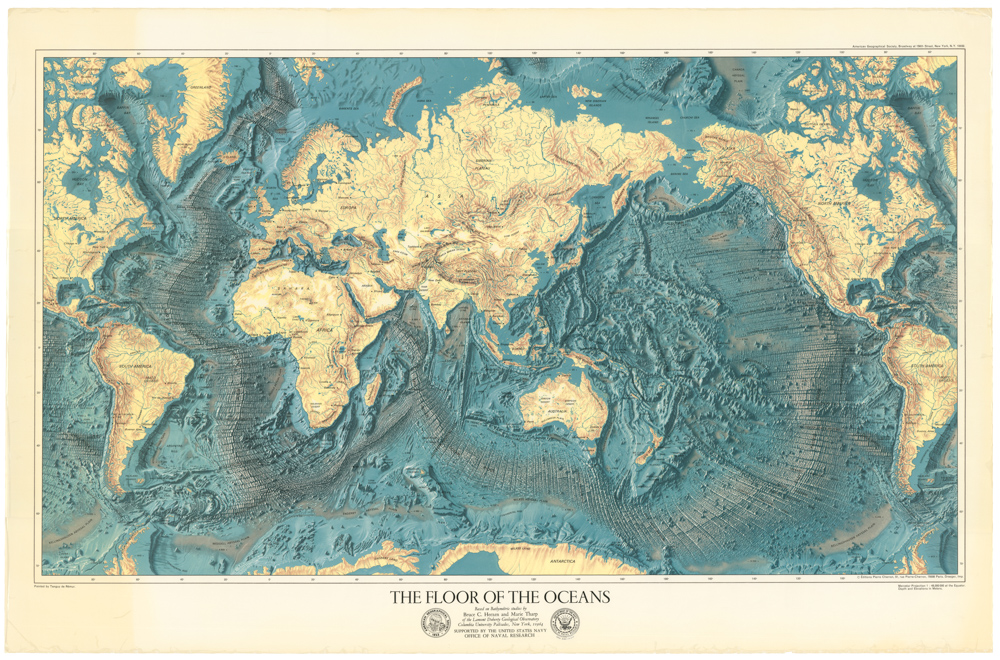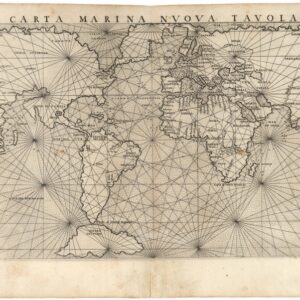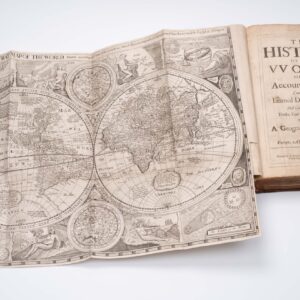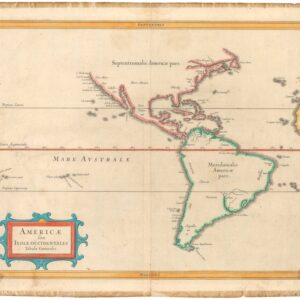Gonneville Land and Terre de Perroquets: Du Val’s early map of Australia and the southern Indian Ocean.
Terres Australes par P. Du Val.
$4,800
1 in stock
Description
This is a rare first state of Pierre Du Val’s Terres Australes, which captures the known and speculative geography of the southern Indian Ocean and New Holland (Australia) and is a seminal work in early French cartography.
The map’s appeal lies in its combination of fact and legend, reflecting both the European exploration of the Indian Ocean and the enduring mystery of Terra Australis. Notably, this is only the second printed map to reference the mythical land supposedly discovered by the French explorer Gonneville in 1504. The map features the northern coast of Terra Australis, here dubbed the Land of Parrots, alongside detailed depictions of the most recent Dutch discoveries.
De Gonneville and the Great Southern Continent
Du Val’s Terres Australes depicts the southern Indian Ocean and the surrounding territories, emphasizing trade routes from Europe to the East Indies. Small ships traverse the routes connecting Africa, India, and Southeast Asia, but these regions occupy only the top third of the chart. The remaining two-thirds of the map is dedicated to the vast expanse of the southern Indian Ocean and a hypothetical southern continent. The northern coast of this southern landmass spans across the map and contains several exciting labels, the most notable of which is Terre de Perroquets or Land of Parrots. This toponym also appears on earlier maps by Gerard Mercator, but below it, we find a reference to the supposed discoveries of Jean Binot Paulmier de Gonneville.
De Gonneville was a French explorer who set sail in 1503 for the East Indies, following sea routes pioneered by the Portuguese. However, due to navigational challenges, he ended up in what he described as a “southern land” after being blown off course. Before returning to France, Gonneville stayed there for six months, engaging with the local population. On his return, he brought a young man named Essomericq, who was said to be the son of a local chief. The exact location of this land has long been debated, with early speculation suggesting Australia. However, modern historians believe Gonneville most likely reached Brazil.
His story was recounted in a 1644 pamphlet by Abbé de Paulmier, who saw it as a means to advocate a French expedition to the Southern Continent. If de Gonneville had genuinely landed in Australia, this meant that France could lay claim to these lands, and it is likely this potential claim that motivated the royal French cartographer to include it so prominently on his map.
East of the Parrot toponym and mentioning of Gonneville, we find a list of several legendary kingdoms that potentially could be located here. All of these place names were drawn from Marco Polo’s travel accounts (i.e. Psitac, Beach, Lucac, and Maletur), and we shall find further evidence of how large Polo still loomed in the minds of European cartographers.
The early mapping of Australia
Part of what makes Du Val’s map so enticing is that he merges older cartographic legends with the latest discoveries to provide one of the era’s most detailed maps of Australia. Thus, new Dutch place names (e.g., Terre d’Arnems, Terre de Wits, and Terre d’Endracht) are placed alongside toponyms that seemingly make no sense.
Terre de Wits was a short-lived Dutch place named on the West Coast, and it probably refers to the Dutch statesman Jan de Witt, who served as the Grand Pensionary of Holland between 1653 and 1672. It may also have adapted a local name for Wittecarra Gully near Kalbarri. Terre d’Endracht is less mysterious and refers to the ship of Dutch explorer Dirk Hartog, who in 1616 became the first European to leave evidence of landing on the continent’s western coast. Alongside these new Dutch toponyms, Du Val also uses Petite Jave (Java Minor) for Western Australia. Like the mythical kingdoms listed on the southern continent, this cartographic mix-up reflects Du Val and others’ continued reliance on Marco Polo’s accounts for these distant lands.
In the interior of the southern continent, Du Val adds descriptive text boxes about Europe, Asia, and Africa, each marked with symbolic birds: an eagle for Europe, a peacock for Asia, and an ostrich for Africa. The texts contrast the physical and cultural features of the known world, with Europe presented as the most advanced civilization.
Context is Everything
This map was created at a time when European cartographers were fascinated with the notion of a vast and largely unexplored southern landmass (Terra Australis), a belief fueled by speculation and scattered reports, not least de Gonneville’s reported 1504 landing. Du Val’s map is the second chart to incorporate this supposed discovery. Still, subsequent French mapmakers would continue to fuel this claim until Captain Cook’s expeditions in the late 18th century.
The map also highlights Dutch activity in the region. The Dutch East India Company had established a foothold in the East Indies. Dutch navigators, including explorers such as Willem Janszoon, Dirk Hartog, and Abel Tasman, had charted parts of New Holland. These discoveries were integrated into Du Val’s map, combining verifiable exploration with speculative geography.
Census & Rarity
Pierre Du Val’s Terre Australe map was produced in three states: 1677, 1679, and 1684, with the present example being the first state from 1677.
The map is part of Du Val’s work, Carte Universelle Du Monde Vulgairement Dite La Mappemonde, a rare world map that consists of four sheets. This complete version is a rarity, with only a few examples surfacing in dealer catalogs over the past three decades and only two OCLC listings (Bayerische Staatsbibliothek and Birmingham Public Library: no 158659245).
Cartographer(s):
Pierre Du Val (1619–1683) was a prominent French geographer and mapmaker during the 17th century. Born in Abbeville, he was the son-in-law of the famous French cartographer Nicolas Sanson, often regarded as the founder of modern French cartography. Under Sanson’s tutelage, Du Val gained access to extensive geographical knowledge and advanced cartographic techniques, allowing him to develop his reputation in the field. His early work drew heavily from Sanson’s methods, but Du Val quickly distinguished himself through his meticulous attention to detail and the aesthetic quality of his maps.
Du Val became the official geographer to King Louis XIV in 1650, a prestigious role that placed him at the center of French mapmaking during an era of significant exploration and colonial expansion. He produced a wide array of maps, including regional maps of Europe, detailed globes, and thematic maps that covered subjects such as travel routes and fortifications. His works were celebrated for their accuracy and beauty, helping to elevate French cartography to international prominence. In addition to his maps, Du Val also published atlases and instructional materials, contributing to the education of future generations of geographers and explorers.
Condition Description
Slight discoloration along centerfold, else very good.
References




